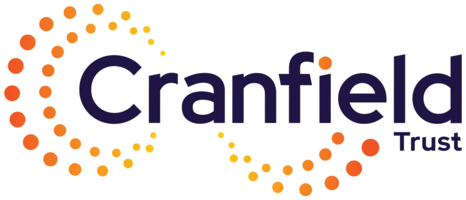This article is written by Cranfield Trust Volunteer, Marcus Coetzee, and was originally published here.
Introduction
Founder’s syndrome is a pathological pattern of behaviour that sometimes afflicts the founders of organizations. Management consultants colloquially refer to it as ‘founderitis’
Founder’s syndrome occurs when a strong-minded founder, who battled against odds to build an organization, ends up becoming its biggest constraint to growth.
I see it as an autoimmune disease that infects founders and consequently undermines the organizations that they worked hard to build. I encounter a new case of founder’s syndrome every couple of months in my consulting work.
In this article I’ll define founder’s syndrome and two ways of seeing it. I will also discuss how it is caused, its common symptoms, how it is treated and how to prevent it.
I hope that this article will help founders and boards to be more alert to founder’s syndrome and prevent it from manifesting. It will help to alleviate the sadness I feel whenever I see how founders undermine their legacy and potential of their organizations – the sadness which triggered me to write this article.
What is founder’s syndrome?
There are many founders that run successful organizations, which continue to adapt and grow. There are also founders who have been able to move on from the organizations they founded and built. These founders do not suffer from founder’s syndrome.
Founder’s syndrome occurs when a founder struggles or refuses to ‘change gear’ and adopt a new mindset, approach or skill set as the organization grows and as its strategic context changes. Rather than making way for a new leader to take the organization to the next level, the founder tries to hang on to power. The founder becomes unable to achieve the outcomes associated with effective leadership. The organization then becomes maladapted – inappropriately or poorly adapted to its environment.
As Mario Morino says in his article, ‘Walking the Talk: A Founder Discusses Sustainability and Permanence’:
“The hard truth is that many organizations grow beyond the capabilities of their founders and need more and different types of leadership, skills, and broader mission ownership to succeed. This realization—that this time, the needed change falls on your doorstep—is a tough punch to the gut for a founder.”
I have heard founders dismiss allegations of founder’s syndrome as unfair criticism from jealous colleagues who want to share in their power. There is some truth to this. Those who suffer from founder’s syndrome are reluctant to share their power and devolve responsibilities to others in their organizations. Whether it should be construed as unfair depends on the circumstances.
The definition of founder’s syndrome also requires that the organization is constrained or undermined by such behaviour. For example, research published in the Nonprofit Management and Leadership in 2002 found objective differences between non-profit organizations that were run by founders versus those that were not:
“The survey research findings support the idea that characteristic differences exist when a founder leads a nonprofit organization. Are founders responsible for holding back the potential growth of their nonprofits? Given that the budget size of founder-led nonprofit organizations are generally smaller than the organizations led by non-founders, this would appear to be the case.”
Founder’s syndrome is inclined to surface when an organization reaches a stage of complexity that the founder is incapable of managing or when an organization requires a significant change in direction from their original vision. This timeframe for the onset of founder’s syndrome varies, depending on how long it takes to reach one of these two thresholds – it might be one year or 20 years.
There may be some overlap between founder’s syndrome and the ‘Peter Principle’, which is when an employee gets promoted to the level where they are no longer competent. In the case of founder’s syndrome, the organization may have simply outgrown the ability of the founder to run it effectively.
Founder’s syndrome also affects founders of organizations and departments/units within larger organizations (e.g. universities). The consequences of founder’s syndrome can be detected in governments, businesses, and non-profit organizations. Founder’s syndrome is about an unhealthy relationship between founders and their organizations.
Two ways of seeing founder’s syndrome
There are two different ways of interpreting the intention and behaviour of a founder that is suffering from this syndrome:
The first is to see the founder as a dictator – they are malicious and doing everything possible to stay in power at the expense of the organization. History and current affairs are full of examples of kings, presidents and CEOs that have done this. Some founders are willing to destroy their organizations to retain some vestige of power for themselves and their loyal factions. A hostile ‘takeover’ or swift dismissal is the best solution to this problem. Thereafter a period of healing will be required as an organization recovers from the founder and their forced exit.
The second way is to see the founder as a victim of their mental models and behaviours – they are lost and sincerely struggling to protect the interests of their organization. This is how I see most of the cases of founder’s syndrome that I encounter in my work. The founders have integrity and are scared that their organizations may crumble should they relinquish power. They cannot see any way out of this problem. They may feel that they are no longer needed when their entire identity is intertwined with the organization they founded. Therefore, the founder needs help to rejuvenate their approach and let others take over the lead and have more power. It is similar to parents who must adjust their approach as their child reaches adolescence and eventually leaves home.
Causes of founder’s syndrome
While founder’s syndrome may be triggered by external factors such as the increased complexity of their organizations or change in direction, the actual cause rests in the psychology and behaviour of the founder.
Founders tend to have strong egos – their sense of self-worth and agency. There is nothing inherently wrong with this. It gives them a sense of control when all the odds are stacked against them. It helps them to strive against adversity. It helps them to establish and build organizations. Many good leaders have this. However, founder’s syndrome emerges when founders stop listening to wise counsel and start believing in their own truths to the detriment of their organizations’ well-being. This might be intentional or unintentional.
To have founder’s syndrome, a founder must also be unable or unwilling to see how they have begun to constrain their organization or impact their beneficiaries. This requires a lack of self-awareness or a degree of double-think where they acknowledge that things must change but hold fast to the old way of doing things. They are inclined to blame problems on other people or external factors. They struggle to reflect on their own role in the equation.
Furthermore, to suffer from founder’s syndrome, a founder must have a tendency to use an autocratic leadership style where they are reluctant to delegate or yield power. While this leadership style may work during a crisis, it is unsuitable for long-term use.
Founder’s syndrome is insidious as the personal characteristics that enabled their organization to grow and succeed in the first place now turn against the founder and start to undermine their organization. For example, establishing startups requires a different approach to leading mature organizations, and many leaders will struggle to change their leadership style.
Symptoms of founder’s syndrome
While founder’s syndrome afflicts an individual, the consequences are borne by the organization, and its staff and beneficiaries.
There may be a tendency for a founder to see their organization as a personal fiefdom where they have absolute power much like a feudal overlord.
There may also be a slowdown in decision-making throughout the organization as the founder wants to have influence over every decision, and as staff try to second-guess the types of decisions that the founder wants them to make. Inevitably, all important decisions will be escalated for their approval. This problem will intensify as the organization gets larger and as more decisions are required.
Other people may see the founder as synonymous with the organization they built. In other words, people associate the organization with the founder as their brands are intertwined.
It is common for factions to emerge that are either for or against the founder. The founder may become obsessed with the loyalty of directors and staff. Consequently, they will try to retain strict control over appointments in the organization.
Emerging leaders end up in conflict with the founder as they want more responsibility and decision-making power, which may be promised but never granted. These upcoming leaders will predictably start to become disengaged. They may lead new factions or leave the organization to join or start competitors.
Outdated thinking will tend to permeate the organization. This might manifest as a failure to modernize or innovate. The founder might have difficulty in seeing how the strategic context surrounding their organization has changed. The founder might struggle to see how the strategy or business model should shift. Doctrine that helped to build the organization might become dogma that keeps it stuck in old patterns.
There is likely to be no succession plan in place and conversations about succession are constantly postponed. The sad reality is that the founder is inclined to be threatened by people with the capability to be their successors. They try to control or eliminate them rather than welcoming and nurturing them.
When founder’s need to share some power, they are inclined to give it to loyal people who can act as their proxies in their absence. I have seen many permutations of how founders have tried to run their organization by remote control – some have exerted their control as directors, consultants, suppliers, through license agreements, or by having appointed friends or family members to senior positions in the organization during their tenure.
Finally, I’ve noticed that founders are reluctant to develop organizational systems that may reduce their level of control over their organization. While they might give these systems token support, they are willing to undermine or override them.
Treating founder’s syndrome
While founder’s syndrome is treatable like any auto-immune disease, it tends to be difficult to treat.
The appropriate treatment depends on the type of organization and the context. For example, it is almost impossible to dislodge the majority owner/founder of a privately-owned business who does not want to change their behaviour. On the other hand, there are more options when dealing with non-profit organizations, public companies, and government.
I have outlined two broad approaches that can be used to deal with a founder that suffers from this affliction. I have called this the ‘hard approach’ and the ‘soft approach’. The suggested tactics for each are not mutually exclusive.
The ‘hard approach’ is when shareholders, members or the Board of Directors take drastic steps to protect the mission of the organization. This assertive and possibly hostile action may seek to achieve the following objectives:
- Demote the founder or shift them to another division of organization or fire them.
- Dilute the founder’s influence – appointing strong unaffiliated people to staff and board.
- Improve organizational systems so that the desired processes and associated decisions are clearly prescribed and less vulnerable to the founder’s interference.
In contrast, the ‘soft approach’ is usually applicable when the founder asks for help or when someone like a board member, consultant or coach intervenes with suitable rapport. This approach may seek to achieve the following:
- Assist the founder to see the next stage in their career, develop an exit plan and then make a graceful exit – one where they leave a capable organization behind them. An exit means also leaving any position that the founder occupies on the board of directors. I have worked with several leaders of non-profit organizations that have been able to do this successfully. They have moved on to ‘greater things’ in their careers, including more balanced lives, new organizations to lead and found different professions to explore.
- Assist the founder to step aside but remain in their organization in a different position. However, I have rarely seen this work! It requires the founder to be a self-aware and skilled leader, and it could be argued that such a leader would never have suffered from founder’s syndrome in the first place.
- If the founder owns the business, then it might be possible to shrink its size or complexity so that the founder can retain their traditional role and preferred way of operating. This may be achieved by focusing on a certain type of customer or product, and by closing or selling the other areas of business.
Prevention is better than cure
As with all diseases, it is better to prevent founder’s syndrome from arising in the first place rather than waiting until it must be cured. It is like choosing to eat healthy foods and get exercise so that you don’t get diabetes or heart disease.
Founders should adopt the mindset of ‘working on’ their organizations as opposed to ‘working in’ them. They should aim for their organizations to be self-sufficient systems that can survive and grow without needing their constant involvement.
They should strive to delegate power wherever possible. This requires them to actively develop staff who can make sensible decisions. It will also free up some of the founder’s time to focus on more long-term and strategic issues that are confronting the organization.
Founders should constantly strive to improve their management and leadership skills. While there is much wisdom to be found in podcasts and books, I suggest that founders formalize this process and do business and leadership courses, and get a coach or mentor. Founder’s syndrome is unlikely when leaders grow faster than their organizations.
Finally, the founders, members and shareholders should ensure that the organization practices good governance. This will involve getting a diverse, competent and largely independent team of directors to help oversee the organization and look after its interests. This team should ensure that the organization can continue to grow should the founder suddenly leave or be unavailable.
Conclusion
Founder’s syndrome is more common than it should be.
It is a failure of founders to let go of power and control when the needs and complexity of the organization has exceeded their ability to lead.
It is an insidious disease since it involves founders constraining or undermining the organizations that they sacrificed blood, sweat and tears to build.
The best method of dealing with founder’s syndrome is for it never to occur in the first place. This requires founders to become more aware of their abilities and how they might be constraining their organizations. It requires founders to invest heavily in their own leadership development. It requires boards of directors to practice good governance and look after the long-term interests of their organizations.
Then if none of this works, it requires members, shareholders and boards to take decisive and swift action to prevent and deal with the negative effects of founder’s syndrome on their organizations.
The future will surely provide many opportunities for entrepreneurs to set up organizations and they should be encouraged and supported to do so. However, the future will also provide more opportunities for founder’s syndrome to surface as the pressure increases for organizations to rapidly pivot and adapt.

Our thanks to our volunteer Marcus Coetzee for sharing his knowledge and insight on good leadership and founder syndrome.
About the author
Marcus Coetzee is a management consultant who has spent the past 21 years helping charities and social enterprises with their strategies, and helping to build a favourable ecosystem for these organisations. He has recently moved to Scotland from South Africa and joined the team of volunteers at the Cranfield Trust.








